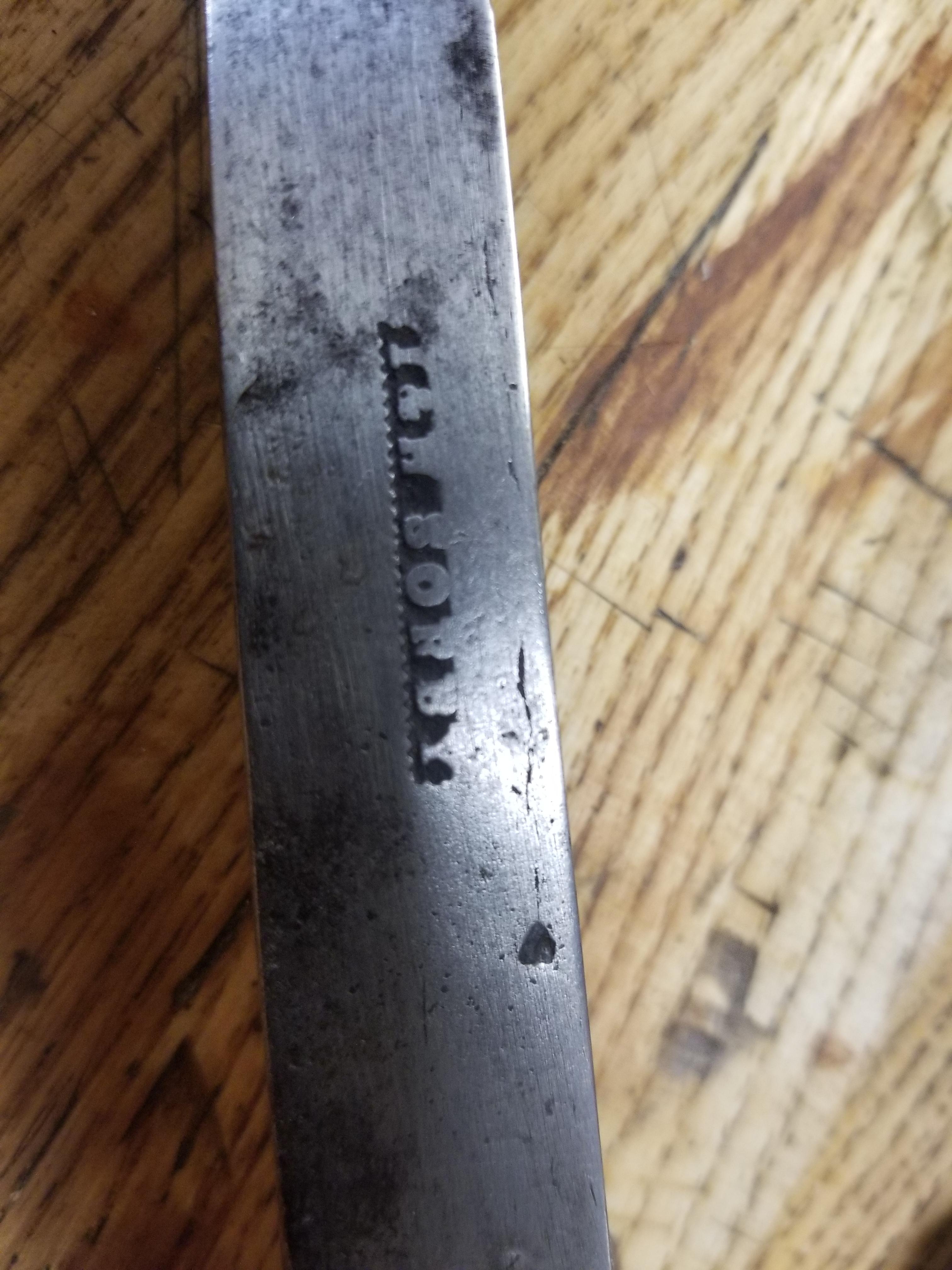That's a fine guess (that a dealer would've ground the exactly) except that three are the same length (exactly) to the top edge, and the identical grind marks are on all sides extending to the bolster.
And then other IH sorby chisels have the same rounding and finish. The two that are unused have no sign of honing, just original milling marks on the back side. These marks are done with silica, and not silicon carbide or another modern wheel.
For your assertion to be correct, unless all of the chisels out there on the internet originated from the same later dealer who ground them all the same (but IH sorby didn't), then it would be a small odds thing that all of the full length chisels seem to have the same exact bevel and roundover profile.
But it wouldn't be very long odds for the factory to have used the same bevel and round over and jigs to grind over a long period of time.
I find it very unlikely that a tool dealer would regrind the bevel on these chisels and then refinish them with a silica-based wheel all the way up to the bolster on all four sides.
The two chisels that I do have that are used have the same roundover profile, but just enough bevel use that the bevel angle has been steepened, and the hardened bit is honed on the flat side (not neatly, but the mill marks are gone).
Interestingly, the assertion on the american forum was that another chisel had been cleaned up by tooltique with a wheel and somehow the versions of the same chisel that jim bode is selling over here magically got the same round over as the tooltique chisels because tooltique used a wheel. That makes no sense.
I think it's a fair guess that all of these are not from the same era and may have been sold to the same person used, but no tool dealer reground them or they wouldn't be the same exact length to the roundover, and then in turn match other low use versions that didn't come through the same dealer.
You're also diverting from the original point of the thread - marples' catalog showed shorter chisels that weren't rounded over in 1862. The sentiment outside of the UK is that's the only picture of catalog chisels from the time and those before by quite a lot were smaller in cross section were also flat. Thus "none of these were ground with rounding on the top at the factory". I think that's unlikely. My original question was whether or not (Since ward and IH sorby generally have this rounding and are better in use than marples chisels) this may have been an artifact of better finish work and more hand time spent on chisels at sorby and ward than at marples. It sounds like the answer is no - marples just didn't make them with a round over on the top.
I've come to find that the neat rounding (which isn't an artifact of hand maintaining the round) is on a whole lot more than sorby and ward, and it continues to appear all the way to 1945
https://www.oldhandtools.co.uk/edge-too ... -g-pearson
(even for a chisel that doesn't look to have been used for mortises - the users reground the nose of the chisels and I would guess these were used on a lathe).
I'm not married to the idea that it's accurate that any of these four may have been middle/early 1800s. The whole point here is a statement that it seems very unlikely that some or even most of this type weren't ground at the factory with a rounded edge at the top.
The real missing part here is that I've used these a bunch, but not recently. You have to have deep and somewhat mortises to make use of them. The reason for the roundover becomes very evident if you grind one of these to a flat bevel and find that they just don't work as well. But I suspect few here have done that. In fact, almost anything I bring up that involves use of hand tools and some kind of perception of efficiency falls on people who don't seem to do much with hand tools or want to argue why it doesn't make sense to do it with hand tools in the first place.
I think your assertion that these were ground by a dealer is extremely unlikely. they may have been cleaned later by a dealer as the original mill marks don't go into the rusted pitting, but the iron has the kind of gray tone that you'd see when something is derusted with acid or electrolysis. They could very well have been derusted by the UK dealer I bought them from (that may be likely as there is no active rust on any part of them, something that would've occurred if they were cast aside in most places).

































